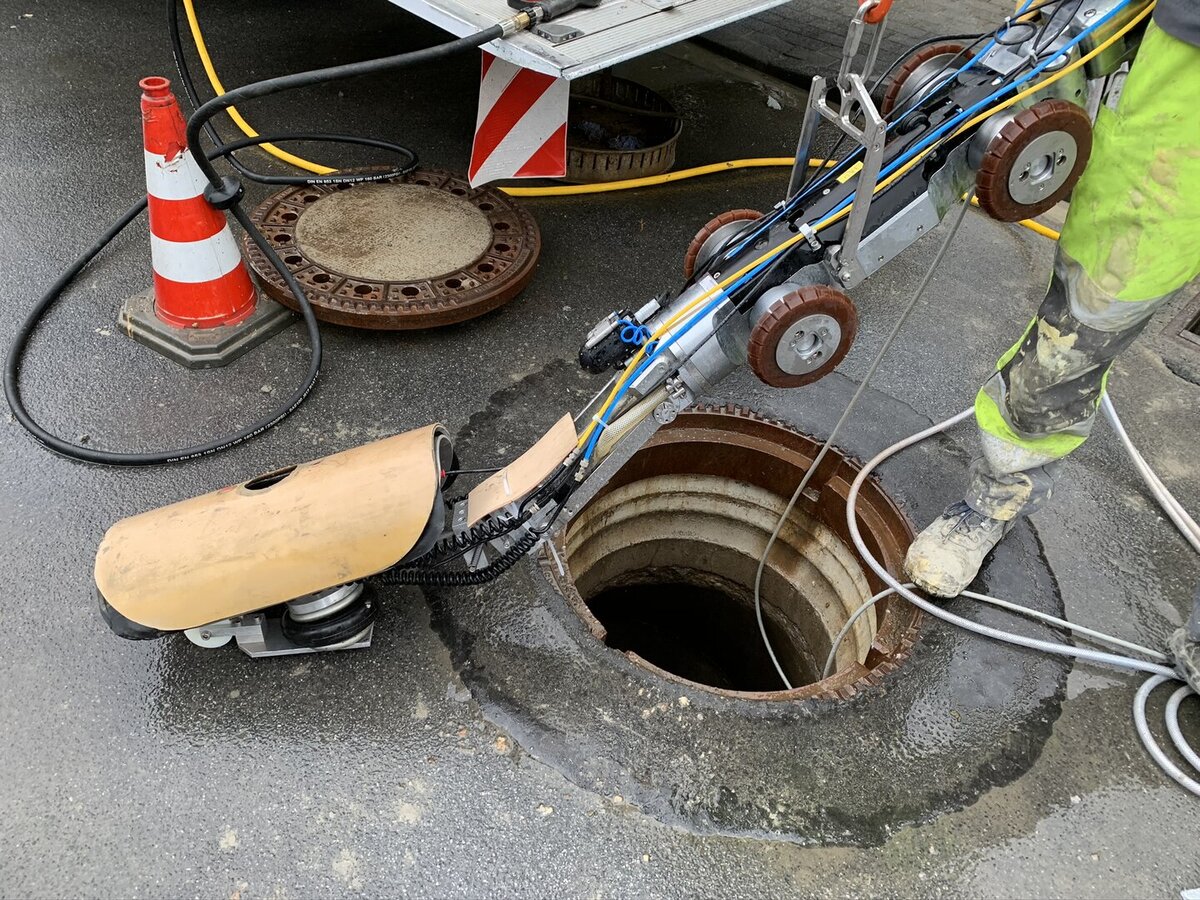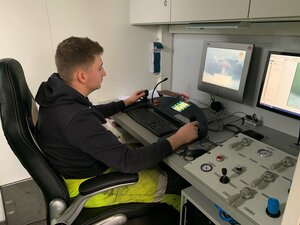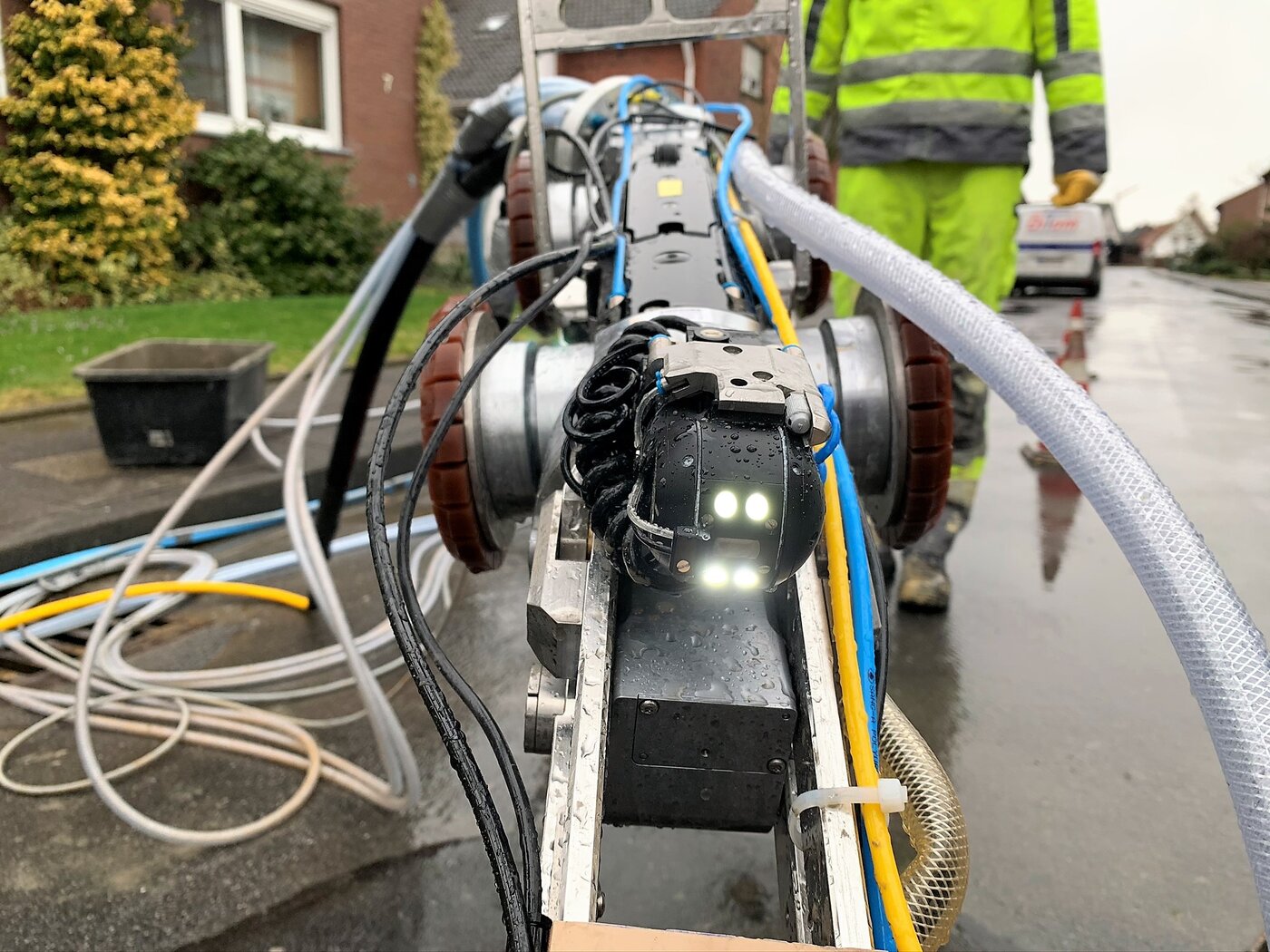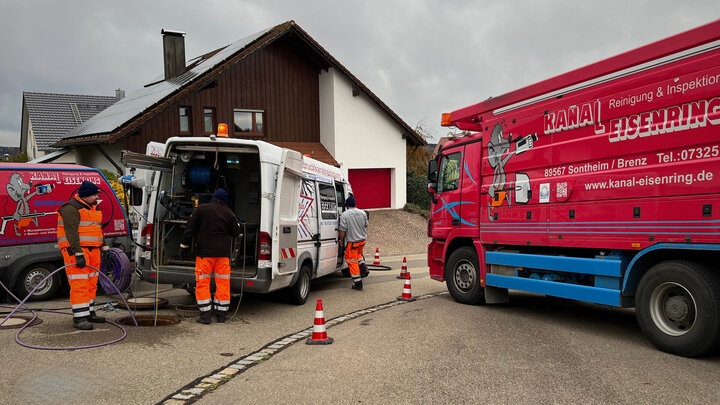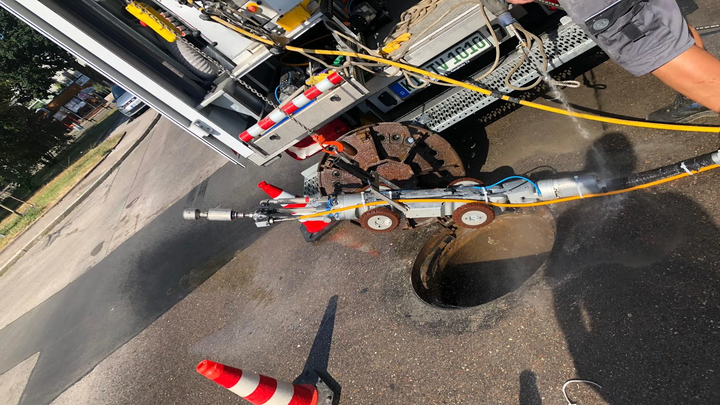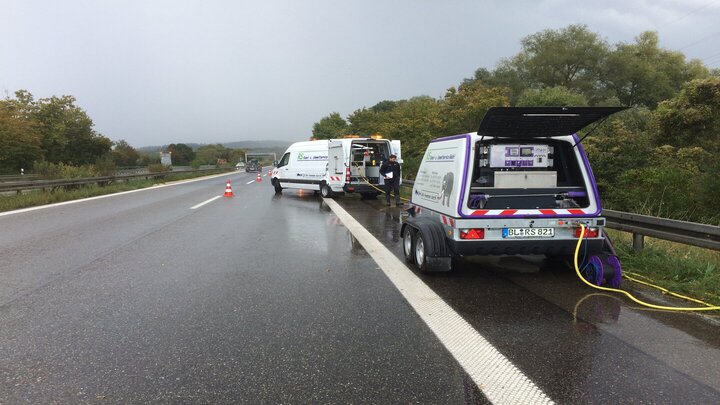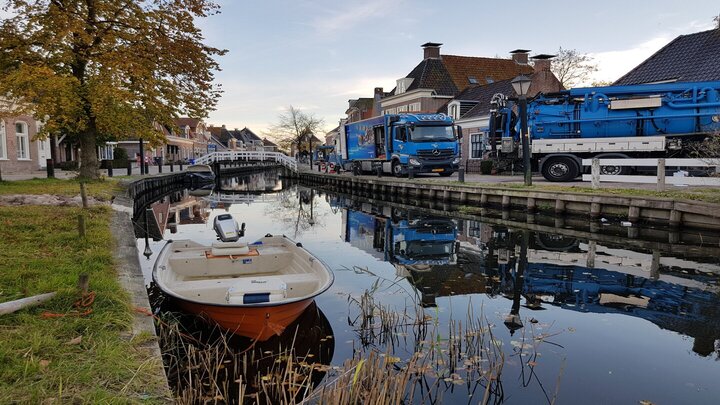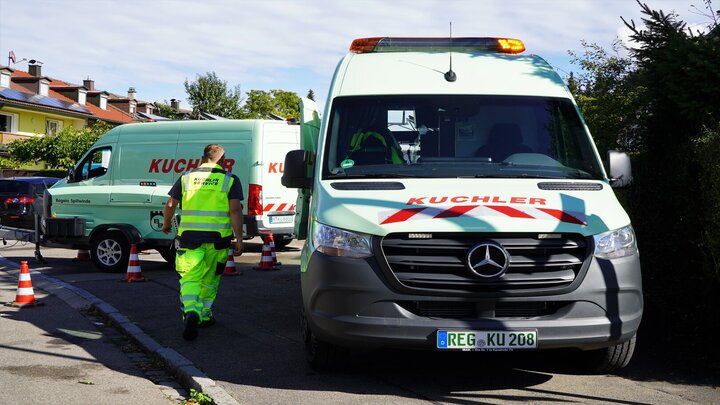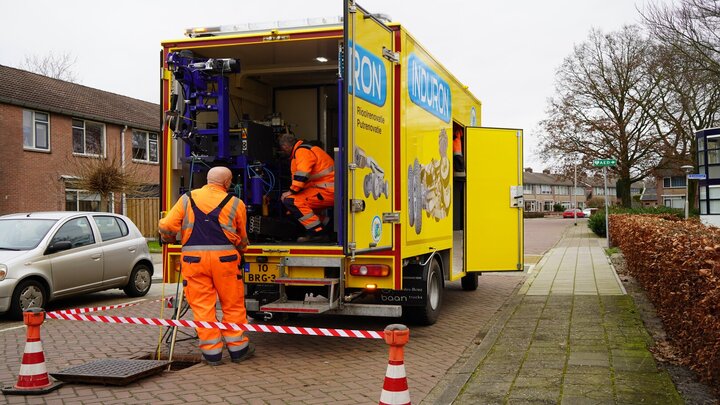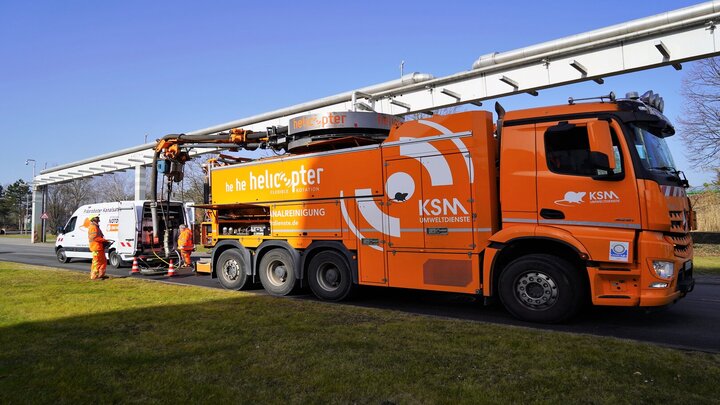Lateral integration by means of injection mortar
Job
A 2-person DiTom team is at work with the new rehabilitation vehicle in a small town not far from the Ahlen headquarters. The daily target is to link 7 connections in a sewer reach. A pipe liner was installed over the entire 48 metres of the DN 300 pipe. The team had already opened the connections the day before with the MicroGator electric cutting robot. The pipe liner was then cut back around the connection. Parts removed during the cutting work were flushed out of the pipe.
Challenge
Even if the required quantity of mortar is estimated in a pre-inspection, it cannot be reliably calculated. "Since the pore or void volume behind the pipe wall cannot be determined in advance, an unlimited supply of material is essential," emphasizes Bittmann. The homogeneous low-viscosity injection material is continuously fed via the accompanying hose until the cavity is completely filled. This is determined by monitoring the injection pressure, which is applied at approx. 1.5 bar. As soon as the required back pressure is reached, this is indicated to the operator and the feed of injection material can be stopped. Thanks to the unrestricted availability of injection material, any cavities there may be in the bedding area are filled in a form-fit manner. The curing time of the grout depends on the ambient temperature. In the current application, this is 35 minutes at an outside temperature of 7 degrees. After the mortar has cured, the formwork shield is removed. In this way, the DiTom team works through all 7 connections that day. "It is quite possible to make more connections on one working day. It depends on the conditions on the construction site, the number of defects and weather-related factors. However, some connections also take more time," DiTom employee Carsten Mielke knows from practical experience. For 21 years, he has been expertly executing the company's varied rehabilitation orders.
Decisions on the materials to be used should therefore be made not only on the basis of technical and economic considerations, but also from an ecological point of view," states Bittmann. The low-viscosity injection mortar complies with DIN 19573 and is stored outside the sewer. It can be pumped over longer distances and conveyed through relatively thin hoses.
Solution
An articulated joint facilitates the insertion of the DSS-Flex casing system with the MicroGator into the sewer via the manhole. "As opposed to working with a winch, we don't need two access points to the main sewer," Bittmann points out. The MicroGator has a high dead weight. The 54 kg alone already ensures good traction. "The MicroGator is thus able to take the DSS-Flex system a long way into the main sewer with all the hoses required it requires for air and injection material," says Bittmann. It is not uncommon to find DN 200 pipes that narrow considerably in places due to rehabilitation with pipe liners or also because of misplaced joints or sagging. With the compactly built MicroGator, he decided on a robot that completely covers the range from DN 200 (relined) to DN 800 without losing performance. In addition, IBAK offers further connection possibilities for the cutter, such as provision for ultra-high-pressure water jet technology.
Work is performed under permanent visual control via the CutterCam colour pan camera. This is attached to the MicroGator and ensures that the user can observe the process steps without restriction via the video images of the working area. Accordingly, the shield and the pipe stopper can be precisely positioned and optimally aligned. The focus of the CutterCam can be flexibly adjusted so that both the working area can be brought into focus and a good view and detailed documentation of the rehabilitation result is possible. The generous pan range and LED lighting ensure optimum visibility and illumination. Good orientation in the pipe is possible thanks to the integrated gravity sensor.
The pipe stopper is inserted in the lateral by motor under camera observation and pneumatically fixed. All three air chambers of the DSS-Flex system are filled via separate lines. The necessary air pressures can thus be regulated independently of one another. The formwork shield is pressed against the pipe wall via these air chambers to seal the main pipe around the lateral connection. The formwork shield then rests against the inner wall of the main sewer over a length of 50 centimetres. Now the mortar is pumped to the formwork shield, which has an injection opening and a pressure sensor. The repair process can be controlled and followed via the CutterCam. The user can influence the process at key points.
Result
DiTom GmbH Kanaltechnik has developed a formwork system for permanent integration of laterals after pipe liner installation. It is connected to the MicroGator cutting robot and is designed in particular for use with pressing groundwater in non-man-size sewers from DN 200 to DN 800. Locally existing bedding deficits, if any, can be remedied with the injection method from within the sewer by a continuous and unlimited supply of material.
Company presentation
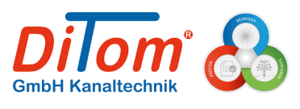
DiTom GmbH Kanaltechnik has been working with cement-bound injection mortar for 22 years in order to rehabilitate and integrate connection pipes. In addition, the company, which is based in Ahlen in the Münsterland region of Westphalia, offers a wide range of services, from leak testing and sewer inspection with TV camera to manhole and structure rehabilitation. Sewer rehabilitation using short and pipe liners is also part of the 28-strong team's range of services. The company, founded in 1998, carries out operations for cities and municipalities, industry and commerce, and private households. The work is based on suction and flushing vehicles as well as sewer inspection and rehabilitation vehicles.
